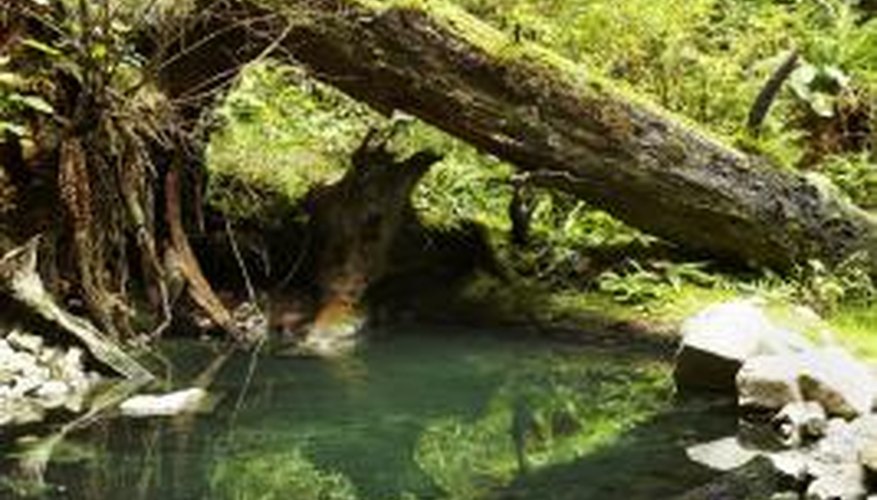There are many species of woodlice, also known as woodlice. Woodlice are crustaceans that are distant relatives of crab, lobster and water fleas. Although they are a land-dwelling species of crustacean, they do need moisture. They take in water through their food and through their legs. Woodlice are ecologically important because they feed on decaying woodland leaves and underbrush and recycle the material into soil nutrients.
Brood Pouch
Although it is difficult to see a difference between male and female woodlice, there are a few subtle differences. A female woodlouse has a brood pouch under the front of her body where she keeps her offspring. Horny plates grow together to cause this pouch. The female fills the pouch with liquid and places her fertilised eggs in it. A single female woodlouse can produce 20 or 30 offspring. The eggs hatch after one month, but they remain in the pouch for a few days until they find their way out.
- Although it is difficult to see a difference between male and female woodlice, there are a few subtle differences.
- The female fills the pouch with liquid and places her fertilised eggs in it.
Colour Variation
Female woodlice can, but do not always, come in a wide variety of colours within their species. The general colours of each species remains the same (for example, Armadillidium vulgare is mottled green, brown and grey, while Oniscus asellus is brown with a grey mid stripe), but when variations do occur within a species it is generally in the female. Female woodlice that have colour variations often produce offspring with similar variations.
Changing Sex
The male woodlouse sometimes changes sex, which is not a quality of the female woodlouse. The male woodlouse will change into a female if it is infected with Wolbachia, which is a bacterium that upsets the hormone of the male woodlouse. A male that changes into a female will pass the bacteria to its offspring in the egg cells, which will cause all of the offspring to be female. The Wolbachia bacteria will then live on to infect a third generation of woodlice.
- The male woodlouse sometimes changes sex, which is not a quality of the female woodlouse.
- The male woodlouse will change into a female if it is infected with Wolbachia, which is a bacterium that upsets the hormone of the male woodlouse.
Male and Female Courtship
The behaviours of the male and female woodlouse are also different. In mating, the male is the aggressor. Mating occurs in darkness. The male woodlouse finds the female by her scent. When it finds a female that is receptive it waves its antennae at her and then rests them on her. If she remains receptive through this encounter, it crawls onto her back and licks her head as it taps its front legs on her back. After a brief period it bends its body under hers so that their genitalia meet.
- The behaviours of the male and female woodlouse are also different.
- When it finds a female that is receptive it waves its antennae at her and then rests them on her.
